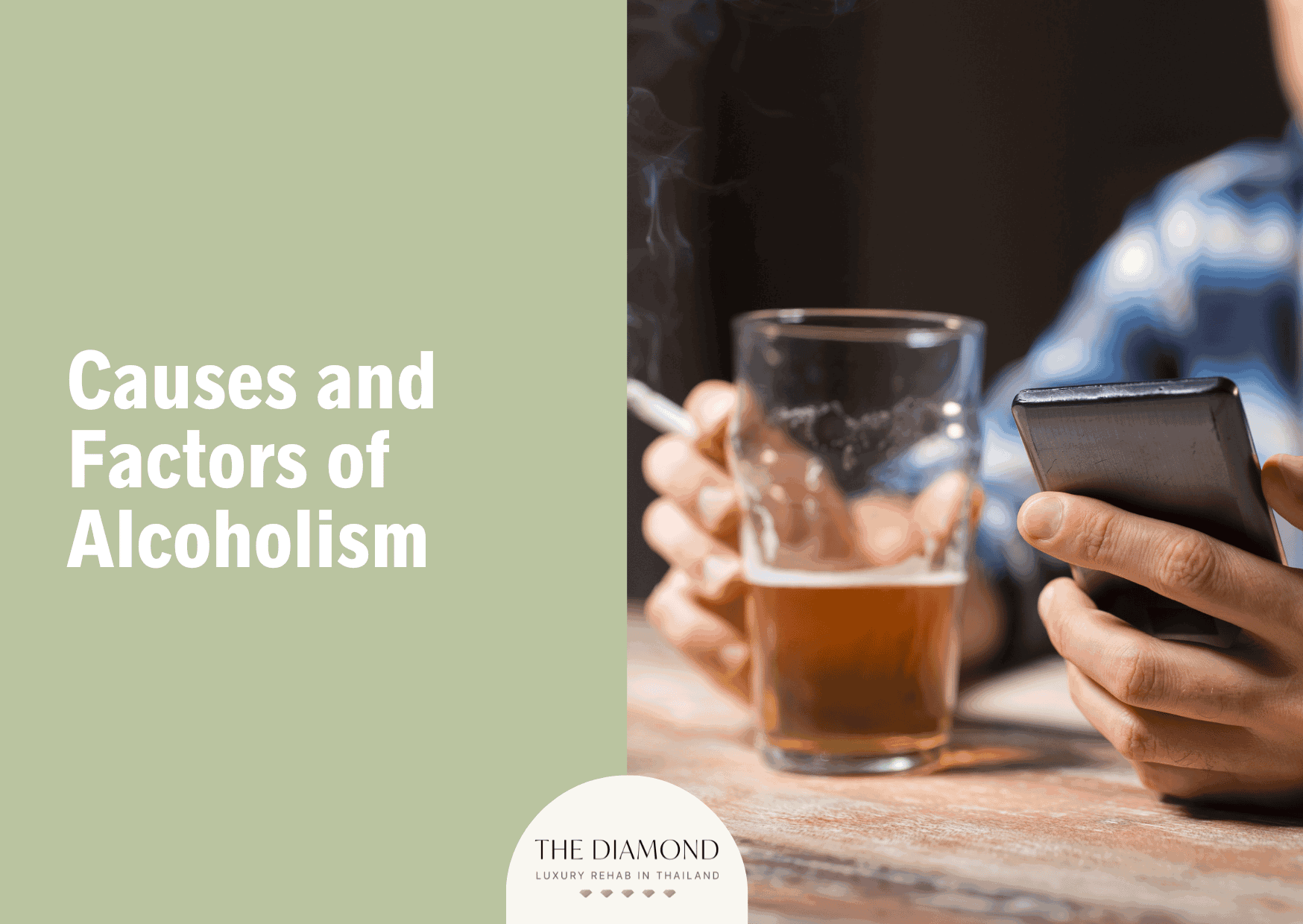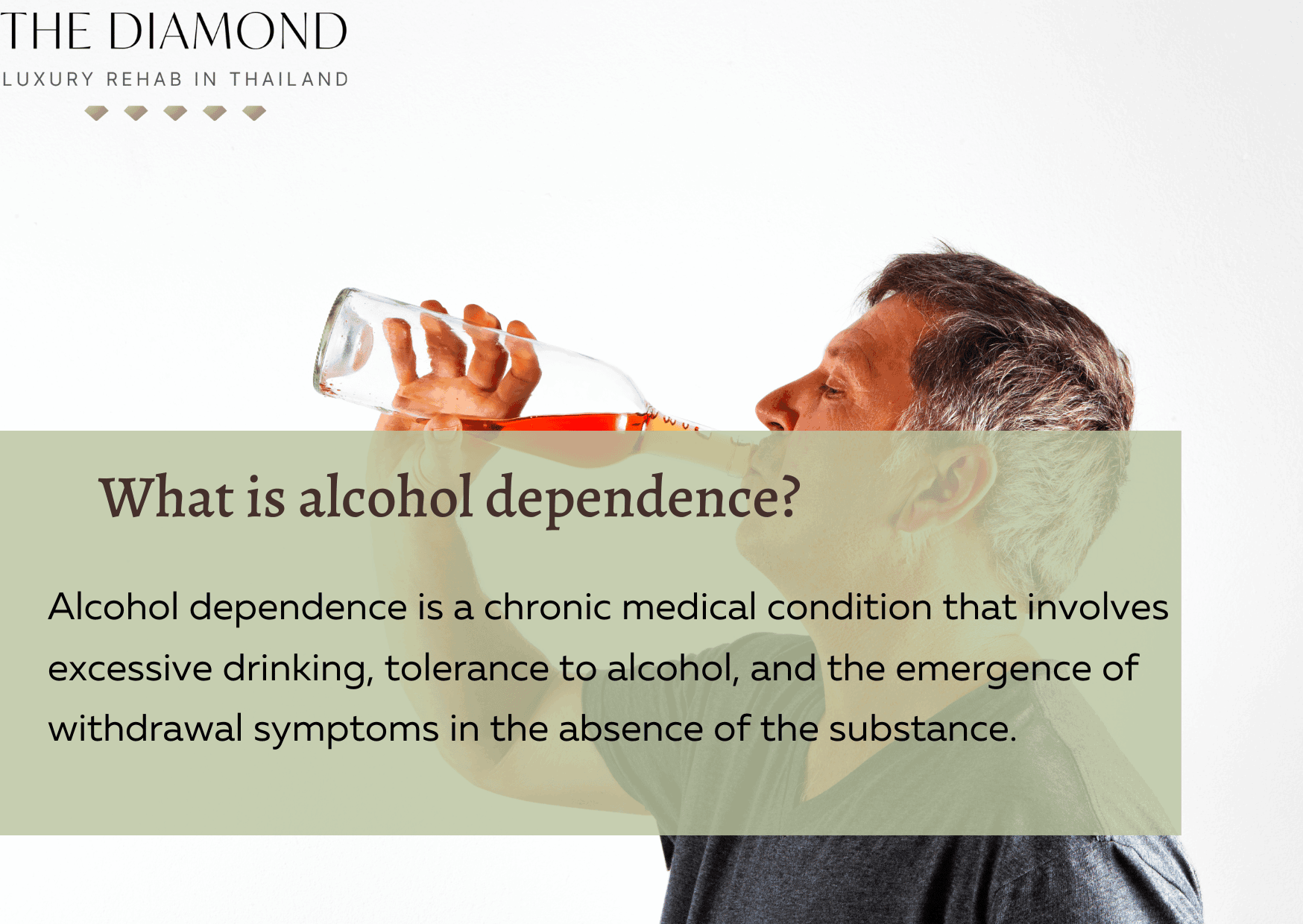Causes and factors of alcoholism

While there is casual alcohol consumption during a social event, there is also social drinking that goes overboard. For some people, this could mean the beginning of drinking problems that may lead to full-blown alcoholism.
Alcoholism is a pattern of alcohol abuse in which a person has an uncontrollable urge to drink and loses control over the amount of alcohol they consume.
Now more commonly referred to as alcohol use disorder, the condition has no single cause. Instead, a complex interplay of factors influences the development of alcoholism, which include a combination of social factors, environmental factors, psychological factors, and biological factors.
Certain people also have an increased likelihood of developing the disorder. Alcohol dependency is more likely in people who face peer pressure, high stress levels, those who engage in underage drinking, and individuals who have a family history of alcohol addiction.

What are the causes of alcoholism?
There is no definite answer on which person would be most likely to develop alcoholism, as its start may look different from person to person. The most common causes of alcoholism are listed below.
1. Social factors
Social factors that influence alcohol use represent a set of influences present in society that can contribute to alcoholism. These could include one’s culture, deviant peer affiliation, and work and school influence. While there are cultures that heavily associate drinking with celebrations, there are also others that have more conservative attitudes toward drinking. These cultural norms and beliefs affect higher or lower drinking rates among different races and ethnicities.
Affiliation with deviant peers also has a strong impact on harmful drinking in adulthood and is associated with lower quality of life and depression. Peer relationships among students and employee alcohol use in the workplace are other contributing factors to the development of alcohol problems. While peers serve as an influential model by introducing alcohol use, drinking alcohol with coworkers is also commonly practiced in certain work cultures. Both can produce negative consequences for the group of people involved.
2. Environmental factors
Environmental factors associated with alcoholism are external influences in the form of environmental stressors that influence an individual’s alcohol consumption. These may include parental drinking, easy access to alcohol, as well as alcohol advertising and marketing. Parental drinking is what causes alcoholism for many people. Evidence exists that parental problem drinking can adversely affect parenting skills and marital relations, and can put children at risk for alcohol use in adulthood.
The availability of alcoholic beverages in nearby establishments also influences individuals to drink. In fact, among college students, there are increased levels of participation in binge drinking when there are more liquor establishments near the campus. Lastly, alcohol advertising tends to depict alcohol consumption and over-consumption as acceptable and rewarding, reinforcing positive attitudes toward drinking.
3. Psychological factors
The psychological factors of alcoholism refer to the psychological characteristics of an individual that drive them to seek satisfaction through alcohol. Alcoholism is frequently comorbid with a plethora of mental health disorders, including depression, schizophrenia, anxiety, and bipolar disorder. Individuals who suffer from these psychological conditions are more likely to turn to alcohol in an attempt to change their mood and cope with negative emotions.
4. Biological factors
Biological factors that play a role in the development of alcohol use disorder are those factors occurring biologically in an individual, including genetics and brain chemistry. Alcoholism is a likely result of having people with blood relatives who suffer from alcohol addiction. Drinking also affects brain chemistry by changing levels of excitatory and inhibitory neurotransmitters. Furthermore, alcohol jacks up dopamine levels in the brain, which tricks a person into thinking that drinking makes them feel better or great.

What are the risk factors for alcoholism?
Alcohol dependence is more likely in certain groups of people. The risk factors for alcoholism are listed below.
1. Peer pressure
One of the risk factors for alcoholism is peer pressure, which is defined as the influence that compels people to do the same things as others of the same age or social group. Peer pressure can contribute to alcohol abuse, as it is difficult for people of all ages to ignore social pressures. This is especially true when encouragement to drink comes from people of similar age.
2. High-stress levels
High-stress levels are excessive feelings of physical or emotional tension. Cumulative life stressors can produce significant changes in drinking behavior because stressful events tend to increase anxiety, and people consume alcohol to reduce anxiety. However, this relief from stress is only temporary and once the effects of alcohol wear off, feelings of anxiety come back worse.
3. Drinking at a young age
Underage drinkers are more likely to become alcoholics at some point in their lives. However, people who start drinking at an early age are not only at risk of developing alcohol use disorders, but they also have an increased likelihood of inflicting damage to their developing brains as a result of alcohol consumption.
4. Alcohol addiction in the family
Alcoholism tends to run in families. Having a family history of alcohol abuse puts someone within the same family at an increased risk of also developing alcohol addiction later in life. Evidence exists that children of alcoholics are about four times more likely than the general population to have drinking problems.

What is alcohol dependence?
Alcohol dependence is a chronic medical condition that involves excessive drinking, tolerance to alcohol, and the emergence of withdrawal symptoms in the absence of the substance.
The 3 factors that influence alcohol use include genetics, deviant peer association, and co-occurring mental health disorders, among several others.
Which person would be most likely to develop alcoholism?
The question “why do people become alcoholics?” almost always seems to bug people who are in search of answers behind the condition. And although there is no one reason behind the disorder, certain factors may increase a person’s likelihood of developing alcoholism.
For instance, people who have a family history of alcohol addiction, those who experienced cumulative stressors throughout their lives, underage drinkers, and individuals with pre-existing mental health disorders are most likely to develop alcoholism at some point in their lives.

What causes addiction to alcohol?
A complex interplay of contributing factors influences the development of addiction to alcohol. These factors include genetics, chemical imbalances in the brain, culture, peer pressure, high levels of stress, childhood trauma and abuse, as well as co-occurring mental health disorders.
These potential causes behind alcoholism tend to interact differently in each individual and may significantly affect if one will end up developing alcohol use disorders or not. The wide array of factors that can contribute to alcoholism makes it nearly impossible for anyone to predict whether any person will indeed develop the condition.
